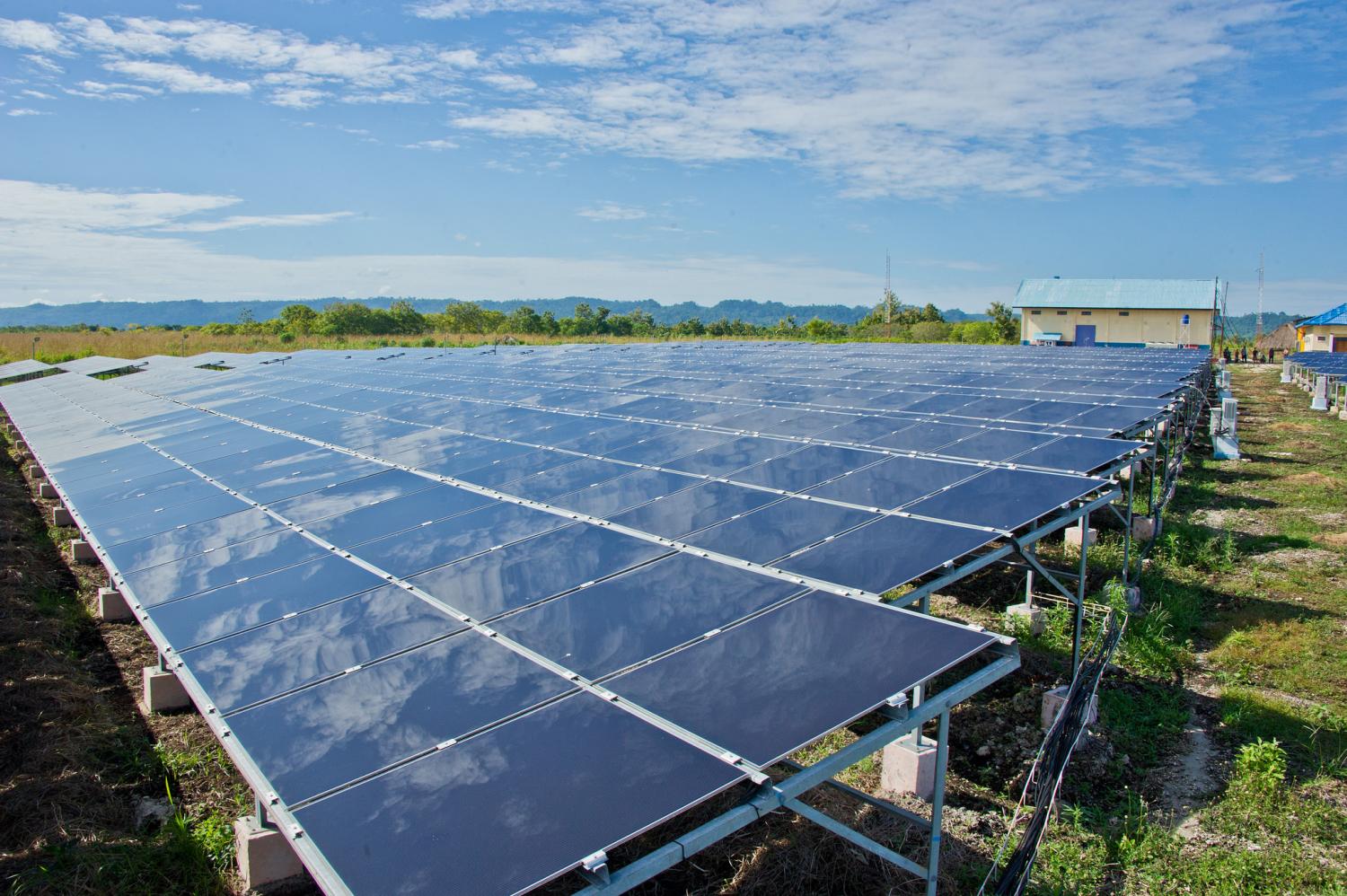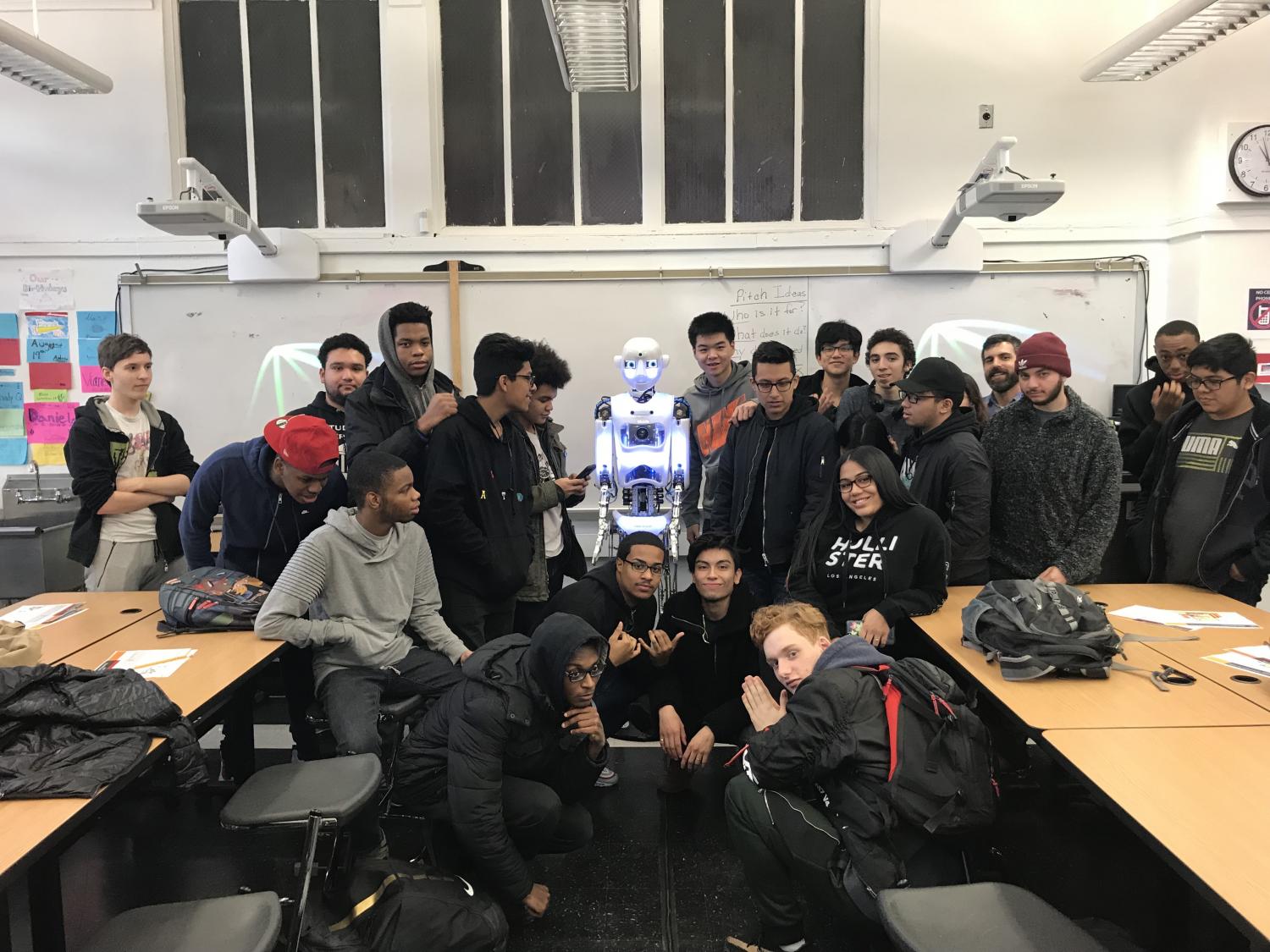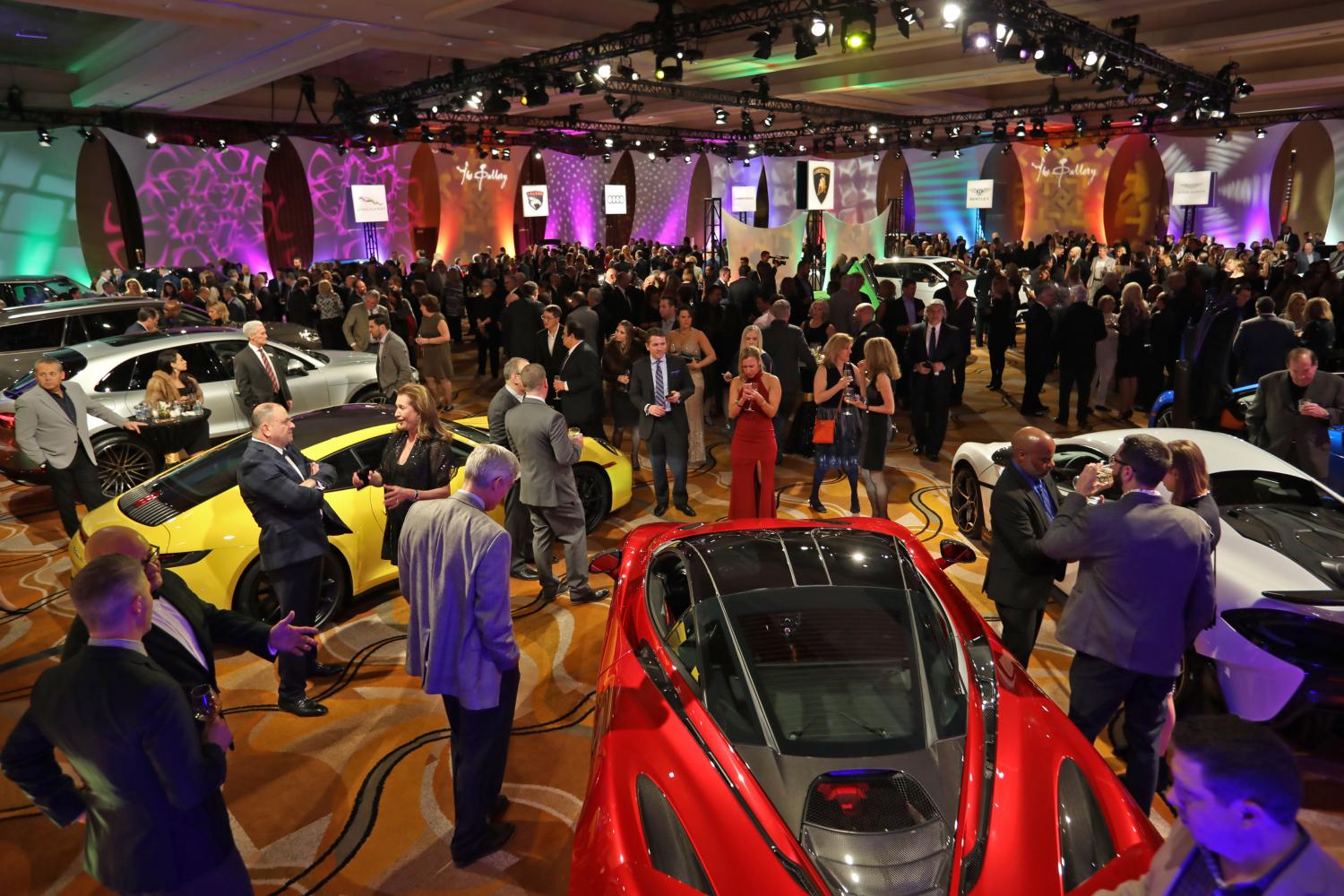Apparel Brands Support National Parks as Shutdown Drags On


My girlfriend and I recently returned from what we thought would be a foolishly timed tour of three jaw-dropping and picturesque U.S. National Parks: Zion, Bryce and the Grand Canyon. To travel across the country to these parks during a government shutdown, we heard time and time again, was a big mistake. Countless articles warned that the trash at the parks would be overflowing, the snow on the wintery southern Utah roads would be unplowed and that campgrounds and trails would not be policed. Even my father, a National Park enthusiast and self-proclaimed birdwatching and foraging expert, gave me the stern talk to be wary of the “crazies,” the same people who days before started chopping trees and vandalizing Joshua Tree National Park.
But what we found was different. We found park rangers staffing the gates for safety assurances but not charging because they couldn’t accept funds. We found park volunteers advising us not to hike an icy steep trail but instead hike where the sun shines and cacti flourish. And we found clean and fully operating restrooms, campgrounds, gift shops, visitor centers and buses. And to my great satisfaction, and to the park’s probable dismay, we found empty parks - we’d hike the most popular trails at the most popular times and cross paths with no more than 20 other “foolish” peers.
Companies join U.S. states to keep parks functioning
Utah and Arizona stepped up; they have funded (if not wholly then partially) their parks to keep their state’s tourism industry buzzing. But the state funds as well as private and nonprofit donations are not an endless stream of cash. As the record-setting government shutdown approaches a full month, park employees and volunteers are constantly wrestling to find every penny to keep the parks open, and most importantly, safe.
Criticism against the government shutdown’s effect on National Parks vamped up again this week when Columbia spent $80,000 on a full-page ad in the Washington Post with the not-so-subtle message:
Now brands are answering the call to step up and take a stand on U.S. national parks. Columbia joins outdoor apparel companies REI, The North Face and Patagonia in advocating for National Parks in the time of uncertainty. Going a step further, Columbia even channeled some messaging from The North Face’s social media campaign, which also highlighted the wall in its clever and poignant #WallsAreMeantforClimbing hashtag. The brand also launched a campaign calling for donations and respect of National Parks. REI recently announced the company would donate $250,000 for park restoration.
Patagonia has been quieter in its direct response to the government shutdown but has been an outspoken critic of President Trump’s environmental and federal land protecting policies. Last fall, the California-based outdoor apparel company donated $10 million of their tax credit to green groups, and launched a social media campaign with the powerful messaging “The President Stole Your Land” following Trump’s announcement to reduce the size of two national monuments.
The bottom line
The government closure has simply resulted in bad business for these companies as well as the small towns surrounding the parks that depend on tourism to support its local economy.
“Clearly, the outdoors is a huge part of our business,” Columbia CEO Tim Boyle told Oregon Live. “Parks in the U.S. are where people use our products. Parks are being damaged by people doing things they probably wouldn’t do if management were in place.”
Writer Jenni Gritters wrote an article on REI’s website detailing the struggles small park communities are enduring because of the shutdown. “This is so hard on the small communities that welcome recreationists and visitors to our parks,” Katherine Hollis, conservation and advocacy director for The Mountaineers, told Gritters.
Be sensible but be adventurous
To anyone hesitating on visiting a National Park due to the government shutdown, do a bit of research prior to embarking but go and enjoy the solitude of smaller crowds, snow-topped awe-inspiring mountains and never-ending canyons. The government may not be open, but the parks remain as beautiful as ever.
Image credit of Zion National Park: Al Hikes Az/Flickr
Is Wales the Tipping Point for Nuclear Energy?


The nuclear energy industry has been all over the map in recent months, leaving many questions about future investment in nuclear power plants. In the latest development, last week Hitachi touched off something of a crisis in the United Kingdom’s long-term energy planning when the company bailed on plans for a new power plant in Wales.
That may look like the beginning of the end for nuclear energy, but on closer inspection the picture is much more complicated.
Down goes the Anglesey power plant
Hitachi may have scuttled the vision of a nuclear-powered future in the U.K., but the match was lit back in the fall of 2018 when Toshiba announced that it was shutting down its NuGeneration subsidiary. NuGeneration had intentions to build the Moorside power plant in Cumbria, but it was spooked by uncertainty over a financing plan worked out by the British Government.
Hitachi's announcement only adds to the hurt. As noted by The Guardian, the Hitachi power plant also fell to the wayside over financing when the company "failed to reach a deal with the UK government."
The company has also ditched plans for a new reactor at the site of the former Oldbury nuclear power plant in Gloucestershire. The Oldbury plant had been decommissioned in 2012, and the new reactor had been given the green light as recently as December 2017.
An opportunity for renewable energy
U.K. energy observers are using crisis talk to describe the situation because nuclear energy currently provides for almost 20% of electricity production in the U.K. The Commonwealth's existing fleet of power stations is aging and needs to be replaced.
The only bright spot for nuclear advocates has been the Hinkley Point C project. That project has been moving forward despite vociferous opposition. At last count, the plant was expected to go online in 2025 and account for about 7 percent of Britain's power needs.
Adding fuel to the opposition fire, Hinkley’s guaranteed rate is higher than current market prices. That provides solar and wind power advocates with some leverage to argue that renewable energy should fill the gap left when nuclear power plants close.
Whether renewable energy can fill the gap is another matter entirely. Wind and solar advocates point out that renewable energy development has been shortchanged by the U.K.'s support for nuclear subsidies.
In other words, technological obstacles are one matter. Political obstacles are quite another.
On the plus side, the political winds may be shifting in favor of renewables. The Guardian cites Greg Clark, the U.K. Secretary of State for Business, Energy and Industrial Strategy, who notes that the falling cost of renewable energy is working against nuclear energy:
“Clark told MPs [members of parliament] that renewables had been getting cheaper in the past five years while nuclear had become more expensive because of safety measures. “The challenge of financing new nuclear is one of falling costs and greater abundance of alternative technologies, so that it is being outcompeted,” he said.”
If political obstacles are removed — and that’s a big if — then the ball is in the renewable energy court.
The question then becomes one of scaling up. That could be a tough row for solar, which currently holds a negligible ranking in U.K. electricity sources.
On the wind power front, it’s another story. Wind already accounts for 17.3% of electricity generation in the U.K.
Though it gets little attention compared to news about the latest solar or wind project, energy efficiency is another key piece of the puzzle.
According to a new report from the organization Carbon Brief, electricity generation in the U.K. has fallen to 1994 levels despite an increase in population.
The savings in carbon emissions has been considerable:
“If this electricity had instead been generated from gas, CO2 emissions for the entire UK economy would have been around 80 million tonnes (MtCO2, 20% )higher than the 368MtCO2 total seen in 2017. If it had come from coal emissions would have been some 180MtCO2 (50%) higher.”
What about Brexit?
Some of the financial uncertainties surrounding nuclear energy development in the U.K. may be traced to the Brexit debacle, so it will be interesting to see if the post-Brexit future brings about any change. In the European Union, France and Germany are among the countries slowly extricating themselves from nuclear dependency.
Elsewhere around the world, nuclear energy also faces a mixed future.
Here in the U.S., the industry is on shaky ground in the power generation sector as the cost of wind and solar continue to drop. The availability of vast renewable energy resources in the U.S. is quickly making nuclear power plants obsolete.
The opportunities are more promising in national defense, foundational research and space exploration, where the U.S. cannot afford to fall behind its global rivals.
It’s likely that the U.S. government will continue to promote at least some level of nuclear power generation in support of those aims, though it’s unclear whether investors will continue to express interest. The U.S. Department of Energy is currently exploring small scale nuclear power plants as one potential area of growth. One of its projects supports the next-generation nuclear energy Terrapower, which is backed by Microsoft’s Bill Gates.
Another hotspot of nuclear activity is — or was — China. In one interesting development in that country, near the end of 2018 TerraPower stopped construction on a new power plant in China. Industry observers have recently noted that China appears to be falling out of love with nuclear energy, though TerraPower attributed its drawback to the fragile state of trade relations with the U.S.
Japan presents another interesting case. The country suspended its nuclear fleet after the Fukushima disaster of 2012, replacing it with coal, oil, and natural gas — which is not a particularly sustainable solution. It began re-engaging with nuclear power just a few years later.
That doesn’t mean the end of the road for renewables in Japan. Leading auto maker Toyota is spearheading a futuristic “hydrogen society” based on renewable energy, though that kind of foundational transformation could be many years in the making.
Finally, yet another country to watch is Saudi Arabia. The kingdom has been under fire internationally for the state-sanctioned murder of journalist Jamal Khashoggi in October 2018. Nevertheless, within a month Saudi Arabia was celebrating the launch of its first nuclear reactor with another one on the way.
The month after that — in December 2018 — U.S. Energy Secretary Rick Perry visited the kingdom and either offered — or threatened to withhold — engagement with Saudi Arabia’s nuclear energy industry.
The underlying issue, of course, is the idea that nuclear-powered countries will invariably develop nuclear weapons.
That threat all but guarantees that some countries will continue to subsidize nuclear power generation in some form or another, at least to some extent, even if other, less costly low carbon alternatives are available.
In this context, it’s worth noting that between Hitachi, Toshiba and TerraPower, investor risk is a major factor in the viability of the nuclear energy industry. However, even if private investors shy away, the national security angle could still be used to justifying investing taxpayer dollars in new nuclear power plants.
In other words, don’t hold your breath for the end of nuclear energy. The industry may shrink, but it will survive into the foreseeable future.
Image credit: Horizon Nuclear Power
Microsoft’s Affordable Housing Pledge Defines Private-Sector Leadership


The median home value in the Seattle area is now over $720,000, almost double from eight years ago. For companies like Redmond, Washington-based Microsoft, the price of housing is hardly sustainable for many of its employees—not to mention the teachers, first responders and civil servants who provide many services on which Microsoft’s workers rely.
Hence Microsoft has turned heads, and rightfully so, with this week’s announcement that the company will commit $500 million for affordable housing within a region desperate to solve this crisis.
Microsoft’s affordable housing strategy rests on three pillars: providing capital for middle-income housing, supporting low-income housing projects, and tackling homelessness through various grants.
To some critics, this promise may be akin to entering an Uzi fight with a pen knife. Just consider how little land is available in the Seattle region, the surging number of good-paying jobs in the Pacific Northwest, and the area’s competitive housing market.
But mind you, this is a company that has been around a long time, and when one thinks how drastically the tech sector has changed over a generation, it is impressive Microsoft has not only survived but thrived—current estimates suggest its valuation is around $800 billion.
It is also important to take a step back and look at the scale of Microsoft’s initiative. The company says it will spend half a billion dollars on affordable housing in an area home to 3.7 million people. Compare that to the U.S. Department of Housing and Urban Development’s 2016 budget (the final year of the Barack Obama administration) for various housing programs, which totaled just under $27 billion in 2016—for a country of 325 million people.
Crunch the numbers, and Microsoft is spending approximately 60 percent more per-capita than our federal government on an intractable problem with no easy solution. And Microsoft’s action is different from supporting a tax or change in policy. This is Microsoft’s money, largess that would have been unthinkable a decade ago.
Microsoft’s plan should spur other companies, especially those in the technology sector, to take action. Shift your attention 800 miles south, and there’s another region long known for its absurd housing prices and stubborn homelessness problem.
California’s median home price was $88,700 in 1970. Almost a half-century later, that price has skyrocketed to almost $550,000. The median home value in Apple’s home base, Cupertino, has approached almost $2.3 million, and quite disturbingly, the cost of living in the wider San Francisco Bay Area has reached the point at which families making $117,000 are now classified as low income.
For those who live in other areas of the country and are feeling smug about the housing woes along the Pacific and Atlantic coasts, be aware that many cities, from Austin to Nashville, are now facing affordable housing struggles as the costs of home ownership and rent continue to climb.
If you have faith that the markets on their own will undergo a course correction, your belief should be tested by the reality that such a leveling off in housing prices likely would have occurred by now.
And for those who say the government should step in, do not count on that happening any time soon—and that is even before the federal government lurches toward its fourth week of a shutdown. Although the federal tax code has modified the amount of mortgage interest that can be deducted from homeowners’ income taxes, the argument remains that federal tax policy still favors homeowners who are relatively well-off. Quite frankly, there is no political appetite to change that discrepancy in the near term.
Microsoft’s salvo in taking on the Seattle area’s housing crisis is couched in numbers, talk about partnering with local governments and community building. But the bottom line is that the tech giant has joined the brands taking stands movement—and is demonstrating leadership by addressing a problem that governments are either unable or unwilling to solve.
So now, we want to ask other technology companies, who’s next in line? After all, the noise over housing costs is not going away—particularly not with the effects that Amazon’s decision to open new bases in Northern Virginia and Queens have already left on those communities.
Image credit: Wonderlane/Flickr
Renewables Surged in 2018 with Investments Over $300 Billion


Oil prices remain low, the U.S. federal government is still determined to prop up fossil fuels, and populist outrage in France has extinguished its flailing president’s determination to take on climate change.
With that context, let’s first lay out the bad news: global clean energy investment declined by 8 percent in 2018 compared to the previous year.
The good news? According to Bloomberg New Energy Finance (BNEF), last year was the fifth year in a row that clean technology investment surpassed $300 billion worldwide. Wind power investments increased by 3 percent to $128.6 billion, and offshore wind enjoyed its second-best year ever. Financing in smart-meter technology, as well as electric cars, also witnessed boosts in spending.
What, then, explains the drop-off? BNEF’s researchers pointed to a dip in solar power investments, which plunged during 2018 by almost a quarter compared to 2017 levels. Policy changes in China explain much of this decline, as that country’s government sought to tamp down its solar boom by reducing access to its feed-in tariffs. But that drop can also be explained in part by the fact that the capital costs of deploying solar are cheaper than they were just a few years ago.
Advocates for renewables should take heart in the fact that clean energy investment within the U.S. ticked upward by 12 percent, largely due to power purchase agreements inked by large companies including Facebook and Google.
What will be compelling to watch in the coming year is how many smaller nations will ramp up investments in renewables. Currently, the list of countries that have invested at least $2 billion stands at about two dozen. And there are some compelling cases that merit attention. Taiwan’s 2018 investment of $2.4 billion is a 134 percent spike from the previous year; South Africa’s $4.2 billion spend is a 40-fold increase from 2017. Weary of doing business with nations such as Saudi Arabia and wanting to plan for long-term resilience, renewables offer countries with few energy resources the opportunity to control their energy destiny.
As our clean technology reporter Tina Casey has long chronicled, the fact that renewables are reaching cost parity with fossil fuels makes large-scale investment decisions difficult to overlook; and historically volatile energy prices also position solar and wind projects as a attractive options to hedge against rising prices.
Solar and wind power are always the usual suspects for clean energy investments, but there are other sectors to keep an eye on. Energy storage will continue to grow as the cost of battery technology becomes cheaper while increasing in efficiency. More automakers, including Toyota and Hyundai, for example, are interested in hydrogen as developments in that technology show promise.
Don’t be surprised if 2019 turns out to be another year where clean energy deployments increase, with their total value holding steady or seeing another decline. The point is that the renewables genie is out of the bottle, and no rollback of policies will stuff it back in any time soon.
Image credit: Asian Development Bank/Flickr
Rising Interest Rates Loom Over Energy and Infrastructure


The Federal Reserve continued to raise interest rates in 2018 as we reached the end of one of the longest bull markets in United States history. As the market cycle turns and the likely economic correction plays out in the coming months and years, what are the implications for the energy and infrastructure markets, which have greatly benefited from low interest rates?
Interest rates have been historically low since the 2008 financial crisis to encourage borrowing and to boost economic activity. The Federal Reserve has been increasing interest rates since 2015, raising their target Fed Funds benchmark four times in 2018 to 2.5 percent. While they are likely to slow the increases, with the Atlanta Fed just opining that only one rate increase in 2019 will likely be needed, the Fed clearly believes today’s economy is strong enough that the stimulus provided by low interest rates is no longer necessary and inflation is the larger long-term threat to the economy.
Higher interest rates increase bank profits, but they make borrowing more expensive, and normally mitigate price inflation. Despite interest rates reflecting an increased confidence in the economy, analysts worry that increasing rates too quickly could lead to another recession.
When the Fed changes interest rates, the effects ripple through the whole economy, affecting equity prices, bond interest rates, consumer and business spending, and inflation. For consumers, this means increases for credit card rates, student loans, and home mortgages. The Federal Reserve sets short-term interest rates, which typically carry over to long-term rates. Investors are already beginning to see changes, with energy and infrastructure markets one of the sectors being affected.
Energy and infrastructure markets have relied on low interest rates over the past decade to grow substantially, leaning on lower costs and debt financing to create above market returns primarily for pension funds, endowments, and other institutional investors. A typical energy or infrastructure project uses 60-75 percent debt financing, so higher interest rates mean that a project will have lower equity returns since debt becomes more costly (If more money goes to pay off debt to banks, then there is less equity return for investors). At the margins, projects will likely no longer be financeable as the economics cannot support the required returns to interest investors.
Project developers, who take the initial risk in creating and developing a project prior to construction, face the greatest uncertainty. Rising interest rates may be tough to overcome, and tariffs on raw materials and solar panels, for example, create a tangible increase in costs. Tariffs can raise cost per watt by 10 percent, while interest rate increases can result in even greater project cost increases. The higher the leverage in a project the more pronounced these increases can be, which ironically can mean that the best projects which banks are most willing to lend into are hurt the most. Whatever the case, while the solar markets continue to boom, developers are faced with either lower fees and profitability for their efforts, or at the worst case the less efficient shops will shut their doors as higher loan interest rates, higher origination fees, and tighter underwriting criteria put marginal projects under water.
Energy and infrastructure master limited partnerships (MLPs) have also been very popular over the last several years, as they provide relatively low risk, high yield investment opportunities. Rising interest rates mean that yields on other investments, such as money-market funds and treasury bonds, will also rise. This means that the energy and infrastructure-based MLPs will have more competition in attracting new capital. Moreover, MLPs suffered a setback last year due to a tax change on interest treatment. Overall, higher interest rates are likely to mean the MLPs are in for a weaker performance in the next few years.
Much like solar and wind companies, data center and IT infrastructure REITs also typically utilize substantial leverage, leaving them vulnerable to raised interest rates. For example, according to a 2016 financial review that analyzed the debt structure of the three largest data center REITs, debt-to-equity ratios for the data center REITs range from 1.36 at the lowest, which is quite sustainable, to 2.75 at the highest, which is quite leveraged. To the extent interest rates are variable, which is a common feature, some of these investments begin to get much more risky with higher interest rates. In addition, many data center REITs will need to refinance a good portion of their debt in 2019, so higher interest rates will likely impact them negatively.
All is not lost, however. Solar, wind and storage markets continue to boom, with many banks belatedly recognizing that these investments are generally low risk. As confidence in solar increases, it will help mitigate some of the impacts of tariffs and higher Fed Funds rates. For example, spreads for solar projects have shrunk to as little as 100-150 basis points (1-1.5%) above LIBOR (the US interest rate as quoted in London, which is a typical measure) as opposed to the typical 200 or more basis points in the past. Foreign investors in particular are still eager to invest in U.S. assets, as they are seen as a safe haven for the coming market correction.
Given that there are a record $3+ trillion in assets under management in private equity and more specifically $173 billion in dry powder available in infrastructure funds, many energy and infrastructure projects continue to see high valuations as IRRs are forced downward. (The more you pay for a project, the lower the expected return.) However, savvy investors understand that valuations are not necessarily reflections of growth or success, but of market supply and demand. It can become harder to distinguish which investments are truly worthwhile and can survive a market correction. With the economy at or near its peak, concerns are rising that the next six to 18 months will see the market faltering, or even dropping into a recession.
It is clear that for energy and infrastructure markets, rising interest rates spell a challenging road ahead. Savvier developers, equity investors, and debt providers are already anticipating the change and tightening their investment criteria while building in additional downside protections. Some are going even further and amassing capital for the next round of distressed assets to come.
For now, while energy and infrastructure remain strong markets, short and medium-term investors are increasingly understanding they are likely to have a higher level of risk than they have for the past number of years due to the repercussions of the Fed’s increase in interest rates. As long as investors keep a clear head and understand how higher rates can impact the projects and investments at which they are looking, they should be better placed to avoid the challenges and problems that the newly emerging market environment present.
Image credit: IPP/Flickr
Aflore and Whole Planet Foundation Help Small Businesses Blossom in Colombia


Whole Planet Foundation was created to support communities worldwide where Whole Foods Market sources products. Flowers for Whole Foods Market stores across the U.S., Canada, and the United Kingdom, along with many other products, are sourced in large quantities from Colombia — so while it’s perhaps a bit of a happy coincidence, it seems quite fitting that Whole Planet Foundation’s newest microfinance partner in Colombia is called Aflore, the name of which comes from the Spanish word flor, for ‘flower.’
Aflore comes from the infinitive aflorar, which means “to surface, to appear,” as in flowers surfacing or appearing, and Aflore is certainly doing that – helping thousands of microentrepreneurs to ‘blossom’ with their own businesses. Not only is Aflore providing microloans to people with little or no access to conventional banks in Colombia, but through a very innovative business model and smartphone technology, they are also empowering thousands of “Informal Advisors” (IAs, and in Spanish, consejeras) to reach out to their own social networks and offer loans that catalyze borrowers’ small businesses, thus helping the economic stability of their families and surrounding communities.
Informal Advisors Create Networks for Success
Via its consejeras, Aflore identifies the trust and relationships which already exist within communities, and formalizes them to enable loan agreements. Aflore leans on the direct sales model and finds leaders in the community (for example, residents who have already been engaging their neighbors in home-sales of merchandise) who are then trained in Aflore’s processes, procedures, and tools to bring financial products to the underbanked.
I visited Aflore at their head office in Bogotá, and then flew over to Medellín, where they opened a new branch office less than a year ago. After a favorable review of the organization’s structure, strategy, systems, and in-field operations, we decided to support the Medellín project to allow Aflore to scale significantly in this new region of Colombia, and to further prove their lending concept which is already successful in Bogotá. With Whole Planet Foundation's funding, Aflore aims to reach 1,500 new microentrepreneurs in Medellín over the next three years.
To me, Aflore’s model stands out as being quite unique compared to many of Whole Planet Foundation’s traditional microfinance partners, whose loan officers’ many responsibilities include identifying new loan recipients, conducting borrower meetings periodically (often weekly or biweekly), ensuring timely repayments, and even transporting cash to and from borrowers. In contrast, Aflore’s outreach strategy is similar to that of a direct-sales company – IAs are recruited, trained and incentivized to leverage their community networks, focusing mainly on identifying new clients (loan origination). Aflore then manages the network, the loans, and related analysis and risk-mitigation. This model is enabled with innovative, user-friendly technology such as the Mi Aflore phone app that is used to collect borrower information, submit loan applications, manage loan portfolios, communicate with peers and financial and tech support, etc.
While ultimately the loan agreements are directly between the borrower-entrepreneur and Aflore, the IA has an incentive to find good prospective clients since she receives a commission upon securing a loan, gains points (called Florines) that she can exchange for cash or prizes such as home appliances, becomes part of a supportive peer community (also via the Mi Aflore app), and gains the satisfaction of introducing a very valuable service in her own neighborhood. Further, a consejera can also apply for and obtain a loan from Aflore herself. Consejeras also help Aflore maintain a high, on-time repayment rate, being reminded by the app a few days in advance of when her clients’ loan installments are due.
As our global communities evolve and as the world’s poorest people face new challenges but also new opportunities to lift themselves out of poverty, it is encouraging to see microfinance evolving as well, through fresh, dynamic ideas which organizations such as Aflore in Colombia bring to market.
by J.P. Kloninger, Americas Regional Director for Whole Planet Foundation.
Learn more about how Whole Planet Foundation brings the benefits of microcredit to women entrepreneurs across South America.
Previously published on 3BL Media news.
New Guidance for Banks to Make Sustainable Investments


More guidance is being offered to help banks to lend without sustainability risks in the controversial seafood, palm oil, soy and beef sectors in south-east Asia and Latin America.
The new recommendations are put forward by Global Canopy, a UK-based environmental NGO whose main objective is to protect tropical forests.
The advice is intended to support both banks and investors in making responsible decisions and to limit environmental and social damage in the territories served.
Global Canopy, which produced the guidance after joint research with the environmental charity WWF, takes the responsibility argument further by highlighting the commercial gains achievable from managing sustainability-related risks.
To reinforce the optimism Global Canopy points out that at present goods and services derived from the oceans are valued annually at $2.5tn (£1.96tn, €2.17tn), and that south-east Asia is likely to produce a quarter of the world’s seafood by 2030.
It reports: “Growth in seafood production is key to meeting regional food security, and banks can capture that opportunity if they put in place safeguards to ensure the sustainable development of the fisheries industry.”
There was disappointment, however, that, although seafood-specific sustainability principles were followed by eight global banks, including the German Deutsche Bank and Standard Chartered based in London, 24 south-east Asian regional banks inspected in the research had no such policies.
Global Canopy tells them: “Banks can upgrade their policies to include seafood and make the most of the opportunity that sustainable seafood represents now and in the future.”
Turning to South America, the research reveals that only one of the 24 banks covered in Brazil and Paraguay is committed to reduce deforestation by client companies. Of 14 banks in Brazil only four specifically demand that clients prove legal land tenure and compliance with the Brazilian Forest Code, the legislation requiring landowners to maintain 80 per cent of the Amazon forests as reserves.
A more hopeful revelation in the research is that nearly 30 per cent of the south-east Asian banks reviewed have policies regulating loans for companies in the palm oil industry, a sector notorious for wanton forest destruction.
Two of the banks have even introduced financial incentives encouraging palm oil companies to farm sustainably.
The research comes with a stark warning. Environmental degradation and irresponsible fishing constitute a threat to business. Therefore, risks to operations and reputations could hit companies’ ability to repay capital.
Tom Bregman, senior sustainable finance associate at Global Canopy, said: “The banking sector in south-east Asia has a historic opportunity to underwrite food security and reap the multi-trillion-dollar benefits across its lending and investment portfolios.
“But first there is a real need to put in place policies that properly assess the environmental and social risks of those they finance.
“Every year over nine million hectares of tropical forests are cleared to make way for the production of soft commodities such as palm oil, soy, cattle and timber. And more than 30 per cent of the world’s fisheries have been pushed beyond their biological limits.”
Another warning was voiced by Raj Kundra, the WWF’s international finance vice-president: “While there are encouraging signs that regional banks are starting to act in areas such as labor rights or palm oil, there is still a long way to go.
“The majority of banks assessed do not have adequate seafood and soft commodity policies to seize the opportunity of financing the food security of tomorrow.
“That’s why today’s tools and guidance are so important. They help to provide a platform to bridge the capacity gap, enabling banks to develop meaningful policies that help manage supply chain risks and opportunities.”
Support for the Global Canopy research was given by a Californian NGO. The Gordon and Betty Moore Foundation, set up by the co-founder of the technology company Intel and his wife to protect the San Francisco Bay area, provided some of the finance.
Photo: Global Canopy
In NYC, PwC Rolls Out Robots to Help Students Learn Tech


The future workforce offers students little choice but to embrace and learn technology. By 2020, nearly 80 percent of all jobs will require some technological skills, and estimates suggest there could be one million more tech jobs than applicants who can fill them here in the U.S.
What can be done to get students inspired about technology at a young age? PwC believes it has an idea.
PwC says in order to inspire both students and teachers, they must become more engaged with technology. But this isn’t necessarily happening in many classrooms across the U.S. Beginning in a New York City classroom this month, PwC has rolled out CODE-E, a life-size robot designed to interact with kids with the goal to spark their interest in technology.
TriplePundit recently interviewed Shannon Schuyler, Chief Purpose Officer and Responsible Business Leader at PwC and President of the PwC Charitable Foundation to learn more about this program.
3p: What inspired this project? Intuitively, few see an obvious connection between a Big Four firm and robotics.
Schuyler: This project was inspired by the fact that there is a shortage of talent with digital skills, particularly in underserved communities. A half million jobs in computing are currently open with an estimated one million more computing jobs than applicants who can fill them within the next year. We want to close that gap. To do it, we need to prepare a future workforce with digital and tech skills, which means we need young people to fall in love with technology. Not with devices -- lots of kids are obsessed with their mobile phones, tablets and game consoles -- but with the technology skills that will continue to transform the way we work and live: computer science, data analytics and robotics.
When we were thinking about how to ignite students’ passion in technology, we thought about how parents sit with their children to read them books from a young age. When parents think about technology, they often just hand over an iPad and walk away from their kids, knowing they will be distracted by the screen for a while. But when we teach technology, we need to think about creating a more personal connection by sharing stories, sparking imaginations and making learning both fun and real. We thought a way to bring technology to life was to bring a walking, talking robot to the students. The students can interact with it, and we can show them how it works and then answer their questions.
3p: There are doubts about the effectiveness of having robots in the classroom. Can you mention research that indicates this technology can make a difference in the classroom?
Schuyler: We know that in the private sector we have the unique insight, expertise, and financial resources to provide the support that teachers across grade levels tell us they’re lacking, and the ability to try new teaching techniques with a fail fast and change quickly mindset. Right now, we are trying something new by bringing CODE-E into classrooms.
From our work and conversations with educators, and through the study on teachers’ ability to teach tech skills, we also know that as technology quickly evolves, teachers need professional development, classroom curricula, and resources to engage their students actively—and creatively— with technology to imagine its possibilities and impact. They’ve asked us for help devising ways to excite their students, so we’re working with them to make sure CODE-E can provide the experience they need.
3p: Can you share examples of how this technology has made a difference, either by inspiring students or teachers?
Schuyler: The first time we brought CODE-E to a school, the students sat in their seats and listened to CODE-E talk, and then they brainstormed ways technology could change something in their lives. The students had a hard time coming up with ideas and quickly lost interest. So, our teams put their heads together and revised the lessons to heighten their empathy skills by enabling students to have a conversation with CODE-E, and to increase engagement in the lesson by prompting them to think about how they could solve a problem they face personally in their school using technology.
By our third school visit, to the Academy for Software Engineering (AFSE) in New York City, we urged students to focus on something practical they would like to change. The students got excited and immediately started churning out ideas: an app to let students know when a seat was available in the overcrowded cafeteria at lunchtime, an automated system to provide access to the restrooms, and a digital system to check them in every morning so they could spend less time waiting in line, and more time learning in the classroom. When the students left, they were cheering and brimming with ideas. The math and science teacher we worked with at that school, Jonathan Rothman, emailed us a couple weeks after the visit to thank us for bringing so much curiosity and excitement to the classroom. He said his students are still talking about CODE-E and students who aren’t in his class keep swinging by asking if the robot is coming back so they can meet it.
3p: The challenge of using tech in schools is ongoing. What else is PwC doing on this front?
It is indeed a big challenge! In a recent PwC study, conducted in conjunction with the Business-Higher Education Forum, we found that while educators strongly support teaching technology, very few — just 10 percent — feel confident doing so. One of the biggest issues is that teachers don’t have these technology skills themselves, so they don’t feel confident teaching them! We realized that before educators can teach their students about complex digital concepts, they need to understand those concepts themselves.
To help give teachers professional development they need, we developed a customized version of PwC’s Digital Fitness App, a mobile platform that helps explain digital subjects to teachers. We worked with six teachers and eight graduate students to review the app and help us develop content.
Starting today, January 16th, we’re giving teachers free access to the app. After they download the app from the app store, teachers complete a digital assessment that evaluates their current digital acumen. Then teachers receive a list of recommended resources to educate them about digital topics, such as coding, data analytics and machine learning.
Image credits: PwC
Reviewing the Automakers’ Sustainability and EV Commitments


The world’s top automotive brands have convened in Detroit’s Cobo Center this week for the North American International Auto Show (NAIAS).
While the focus will largely be on new vehicle and concept unveilings until the show’s conclusion on January 27, the 2019 NAIAS is taking place after another year full of major investments and moonshot-like commitments by legacy automakers to expand their offerings of electric vehicles (EVs) in the coming decades.
But beyond cars, how are the world’s biggest automakers framing their sustainability and corporate social responsibility (CSR) goals?
Here is a breakdown of the latest sustainability and electrification developments from top automakers that are showcasing their vehicles at the 2019 NAIAS in Detroit.
Ford Motor Company
Three years ago, Ford Motor Company took its first step toward EV development after announcing it would invest $4.5 billion in EV production and introduce 13 new models by 2020. Just over two years later, the Dearborn, Michigan, company announced it would significantly up both of these totals to $11 billion in investments and 40 hybrid and fully electrified vehicles by 2022.According to its 2017-2018 CSR report, Ford has also begun experimenting with renewable, plant-based materials, including tomato skin, bamboo and algae, in an effort to replace petroleum-based plastics. The company has already been successful in developing and implementing soybean-based foam in its vehicles.
Ford is also making improvements to its manufacturing facilities by continuing to follow past commitments to reduce both water use per vehicle produced by 30 percent by 2020 and operational greenhouse gas emissions by 30 percent by 2025.
Toyota Motor Company
Toyota Motor Company pioneered one of the first widely adopted hybrid vehicles with its Prius line in 1997. Today, Toyota is applying the same ambition towards sustainability with its Environmental Challenge 2050.Under its 2050 strategy, the company has promised to eliminate most, if not all, carbon dioxide emissions in the company’s new vehicles, facilities and manufacturing processes no more than 31 years from now.
Nissan Motor Company
Despite offering one of the best-selling electric cars in the world, Nissan Motor Company’s foray into the EV market has not branched out much beyond its Leaf series.In late 2017, however, the Japanese automaker announced that it intends to build 12 new zero-emission vehicles through its partnership with Mitsubishi and Renault by 2022. In doing so, the Mitsubishi-Nissan-Renault alliance intends to make a €10 billion ($11.5 billion) investment to develop new powertrains and electric technologies.
Beyond investment, Nissan has also developed Nissan Sustainability 2022, which the company says is centered around “realizing a zero-emission, zero-fatality society” through the elimination of any potential carbon dioxide emissions and fatalities caused by its new vehicles.
Fiat Chrysler Automobiles
In June 2018, Fiat Chrysler Automobiles (FCA) announced it will develop 12 battery-electric, plug-in and hybrid propulsion systems across 30 different lines of vehicles by 2022.While the company is estimating that models with “heavy electrification” will comprise just 15 to 20 percent of sales, FCA has committed itself to sustainability by aligning with 11 United Nations Sustainable Development Goals (SDGs). In doing so, the Italian and American automaker is aiming to lessen the environmental impact across the design, sales, production, usage and end-of-life cycles of its vehicles.
General Motors
General Motors (GM) laid the groundwork for its plunge into electric vehicles through a press release in October 2017. Proclaiming that the “future is all-electric,” GM revealed it will be developing 20 new all-electric vehicles by 2023 while also maintaining its commitment to refinement of the internal combustion engine.Named one of CR Magazine’s 100 Best Corporate Citizens of 2018, GM says it is making safety and zero emissions the focus of its sustainability efforts while also maintaining a broad alignment with all 17 of the U.N. SDGs across its global operations.
Volkswagen AG
Volkswagen AG has given itself one of the most rigorous deadlines to adopt a fully electrified lineup after it announced that it will gradually phase out the internal combustion engine following the release of its next generation of gasoline and diesel cars in 2026. After tens of billions of dollars in investments, Germany’s largest automaker has positioned itself to become a major player in the EV market within the next decade.In addition to its adoption of EVs, Volkswagen is also in the middle of reinventing itself as a corporate citizen following its 2015 emissions scandal.
In 2016, Volkswagen established TOGETHER — Strategy 2025 in order to better its customer and employee relations, competitive profitability and impact on the environment. And the company’s shift towards electrifying its entire portfolio by 2030 will undoubtedly play a major role in achieving these objectives.
Honda Motor Company
Honda Motor Company has dabbled in hybrid vehicles in past years, but the company has remained noticeably silent on any plans for a broad adoption of EV technology.Despite its lack of EVs, the Japanese company, according to its 2018 sustainability report, still has lofty sustainability goals like its competitors, including reducing carbon dioxide emissions in its products by 30 percent by 2020. As part of its 2030 Vision plan, Honda will also aim to electrify two-thirds of all automobiles by 2030 with a broader goal of halving company-wide carbon emissions measured against a “fiscal year 2000 baseline.”
Image credit: NAIAS 2019
Corporate EHS and Sustainability Leaders Strengthen Focus on Impact and Execution


While shiny new sustainability projects continue to draw attention from the media, NAEM’s recent trends report revealed a new rubric for sustainability performance within companies. The criteria: alignment with the business strategy, integration into business operations, and achieving measurable results.
“I think execution has become a real focus in a significant number of companies,” one research participant explained. “And it turns out, doing fewer things but really developing the action agenda required to move them from strategy to actual impact is very important.”
For seasoned professionals, the idea that successful programs should have a strong business case may not come as much of a surprise, but according to research participants, not every company has been so disciplined about vetting their sustainability projects.
“[There] are still companies that are not tough-minded enough about how they develop their environmental agendas. As a result, they produce strategies that are not as business-like, not as carefully constructed as they need to be,” one participant explained.
One way companies are refining their focus is through the use of materiality assessments. A materiality assessment is a strategic planning tool that helps companies evaluate new initiatives in terms of the company’s reason for being as well as their ability to achieve results.
Sustainability goals are another growing area of scrutiny, participants said. If they have too long a horizon or are too audacious, they start to lose their relevancy to the business.
“We've had long-term goals for a long time, but a lot of people are thinking like, ‘We’ve set this goal that's so aggressive, [but] we don't know how we're going to get there.’ Is that meaningful? Is it too far out in the future that it’s not even meaningful? So some companies that are earlier in this process I think are struggling with that a bit.”
Among those who responded to NAEM’s trends survey, companies are increasingly looking to the Sustainable Development Goals (SDGs) to help set goals that will drive impact they seek. The idea behind the framework is that the projects EHS&S professionals undertake will contribute to collective efforts to address the systemic societal and environmental challenges that pose risks for their companies.
Over the next several years, as sustainability continues to be integrated more deeply into operations, NAEM’s research suggests there will be more conversation about setting effective EHS&S metrics, prioritizing efforts and measuring the impact companies are making in the world.
“The reality here is the reality that business people generally know well,” one participant said. “A great plan is only a plan. You need the implementation and follow-through to ensure that it does produce a payoff.”
Previously posted on 3BL Media News.
Image credit: Susan Yin/Unsplash